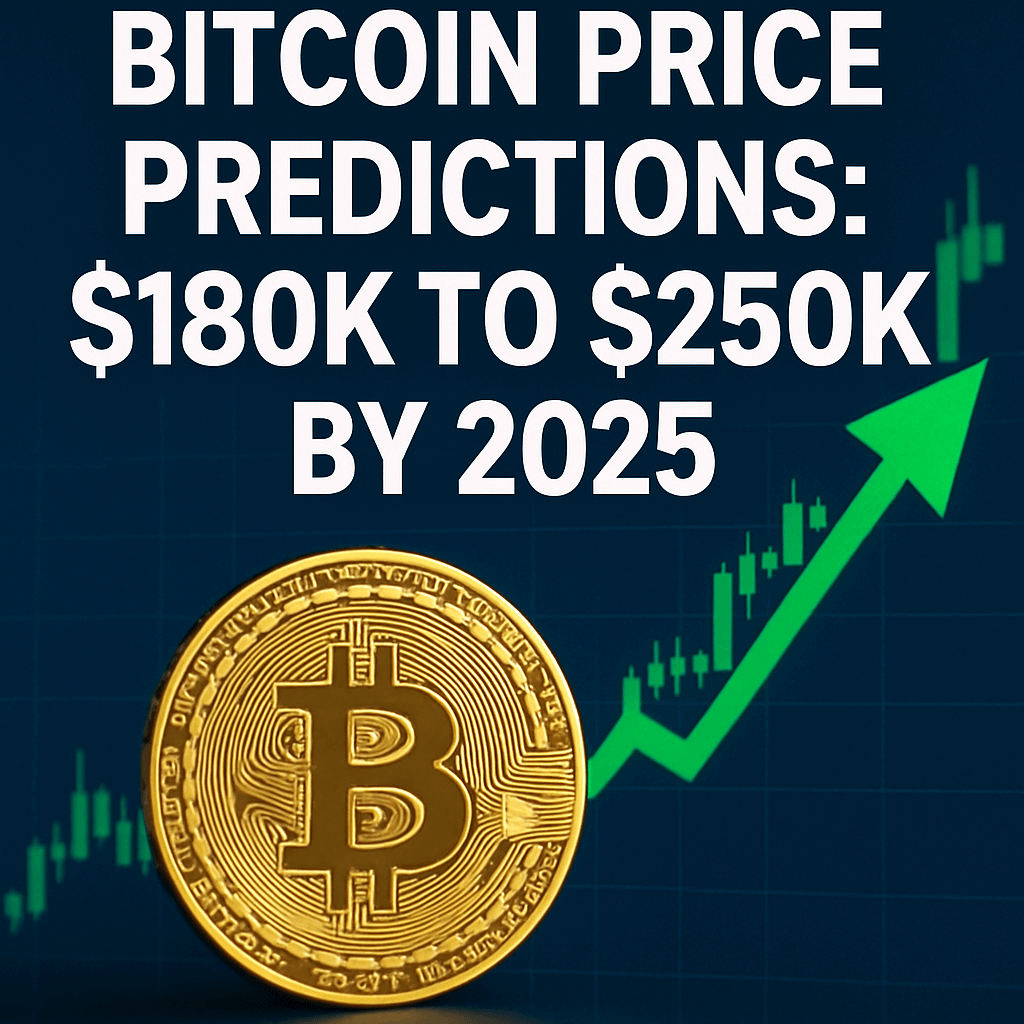Bitcoin Price Predictions: $180K to $250K by 2025


Bitcoin traders are projecting a significant uptick in price, with estimates ranging from $180,000 to $250,000 by the end of 2025. Analysts attribute these optimistic forecasts to several interrelated factors, including market cyclicality, increased institutional investment, and a potential influx of liquidity into the cryptocurrency ecosystem.
Understanding Market Cyclicality
Market cyclicality pertains to the periodic fluctuations that occur in financial markets. For Bitcoin, this is often characterized by a cycle of bull and bear markets. Historically, Bitcoin has demonstrated a tendency to reach new all-time highs approximately every four years, often coinciding with its halving events where the reward for mining new blocks is cut in half, effectively reducing the rate of new Bitcoin entering circulation.
Expert Insights: Prominent analyst and author of “The Bitcoin Standard,” Saifedean Ammous, notes that past performance indicates major price surges typically occur in the aftermath of halving events, suggesting that the next halving in 2024 could be a precursor to significant price appreciation leading into 2025.
Institutional Investor Adoption
Another critical factor fueling bullish predictions is the growing acceptance and adoption of Bitcoin by institutional investors. Companies such as MicroStrategy, Tesla, and Coinbase have publicly allocated significant portions of their cash reserves into Bitcoin, signaling a shift in the traditional investment paradigm.
- BlackRock and Fidelity: Major financial institutions like BlackRock and Fidelity have engaged in Bitcoin products, introducing futures and ETFs that allow institutional clients greater access to the asset class.
- Regulatory Landscape: As the regulatory framework around cryptocurrencies continues to evolve, greater clarity is expected to attract more institutional investments, which could further drive demand.
Liquidity and Market Dynamics
The influx of liquidity refers to the availability of cash or assets in the market that can easily be converted to Bitcoin. This is further supported by ongoing monetary policies from central banks around the world that continue to inject capital into economies.
- Quantitative Easing (QE): Central banks’ QE measures are intended to stimulate economic activity but also result in increased liquidity that can find its way into speculative assets such as Bitcoin.
- Global Economic Instability: Geo-economic tensions, inflationary pressures, and declining trust in fiat currencies are driving individuals and institutions alike toward alternative stores of value like Bitcoin.
Price Predictions: Probability Assessment
While the projections of $180K to $250K by 2025 may seem ambitious, they are grounded in various models and expert analyses. Popular predictive models include the Stock-to-Flow (S2F) model, which suggests a linear relationship between scarcity and price. This model forecasts even more significant price levels, though it has faced criticism due to deviations from historical performance.
Comparative Analysis: Other analysts see $180K as a more conservative estimate, largely due to potential regulatory hurdles and market conditions. Ultimately, the plausible range seems dependent on macroeconomic factors, technological advancements in blockchain, as well as broader acceptance of cryptocurrencies.
Conclusion
As Bitcoin approaches its next halving in April 2024, attention will likely remain focused on these estimates. The interplay between institutional adoption, liquidity, and historical trends will be critical to watch. The market stands at a crossroads, and the next few years could redefine the future of Bitcoin in the financial landscape.